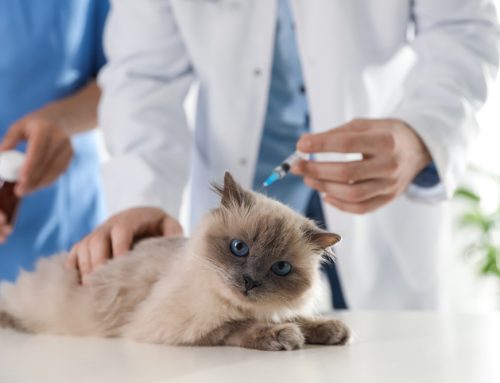Just 1 MONTH ago Kimberly developed strange eye changes, loss of appetite, staggering, lethargy, & had a high fever & fluid building up in her chest & belly ! Before coming to us she was treated with several various medications in an attempt to control her problems. Her bloodwork revealed anemia, elevated globulins, & elevated white blood cell count. It is truly hard to believe that “Kimberly Version 2.0” is actually the same cat !
Feline Infectious Peritonitis (FIP) used to be a fatal disease in cats caused by a mutation of the feline coronavirus. The disease has 2 main forms: effusive (wet) & non-effusive (dry). The non-effusive form can affect various organs, including the brain & spinal cord, leading to neurological FIP.
Neurological FIP Key Points:
1. Cause
Mutated feline coronavirus (FCoV)
The virus can cross the blood-brain barrier & infect the central nervous system
2. Symptoms:
Ataxia (loss of coordination)
Seizures
Behavioral changes (aggression/lethargy)
Tremors
Paralysis
3. Diagnosis:
Clinical signs & history
Cerebrospinal fluid (CSF) analysis may show elevated protein levels & increased white blood cell count.
MRI or CT scans to identify brain lesions.
PCR tests to detect viral RNA in tissues/fluids.
Histopathology of affected tissues
4. Treatment:
Historically, FIP was considered fatal with no effective treatment.
Recent developments include antiviral drugs like GS-441524, have proven to be effective in treating FIP, including neurological cases.
Supportive care: corticosteroids to reduce inflammation, anticonvulsants for seizures, & antibiotics for secondary infections.
5. Prognosis:
Without treatment, neurological FIP is invariably fatal.
6. Prevention:
Reducing stress & overcrowding in multi-cat environments
Good hygiene practices to minimize the spread of the coronavirus
No effective vaccine for FIP; prevention focuses on managing risk factors
Neurological FIP is challenging due to its rapid progression & severe impact on the central nervous system. Early detection & intervention with emerging treatments are critical for improving outcomes.







Leave A Comment